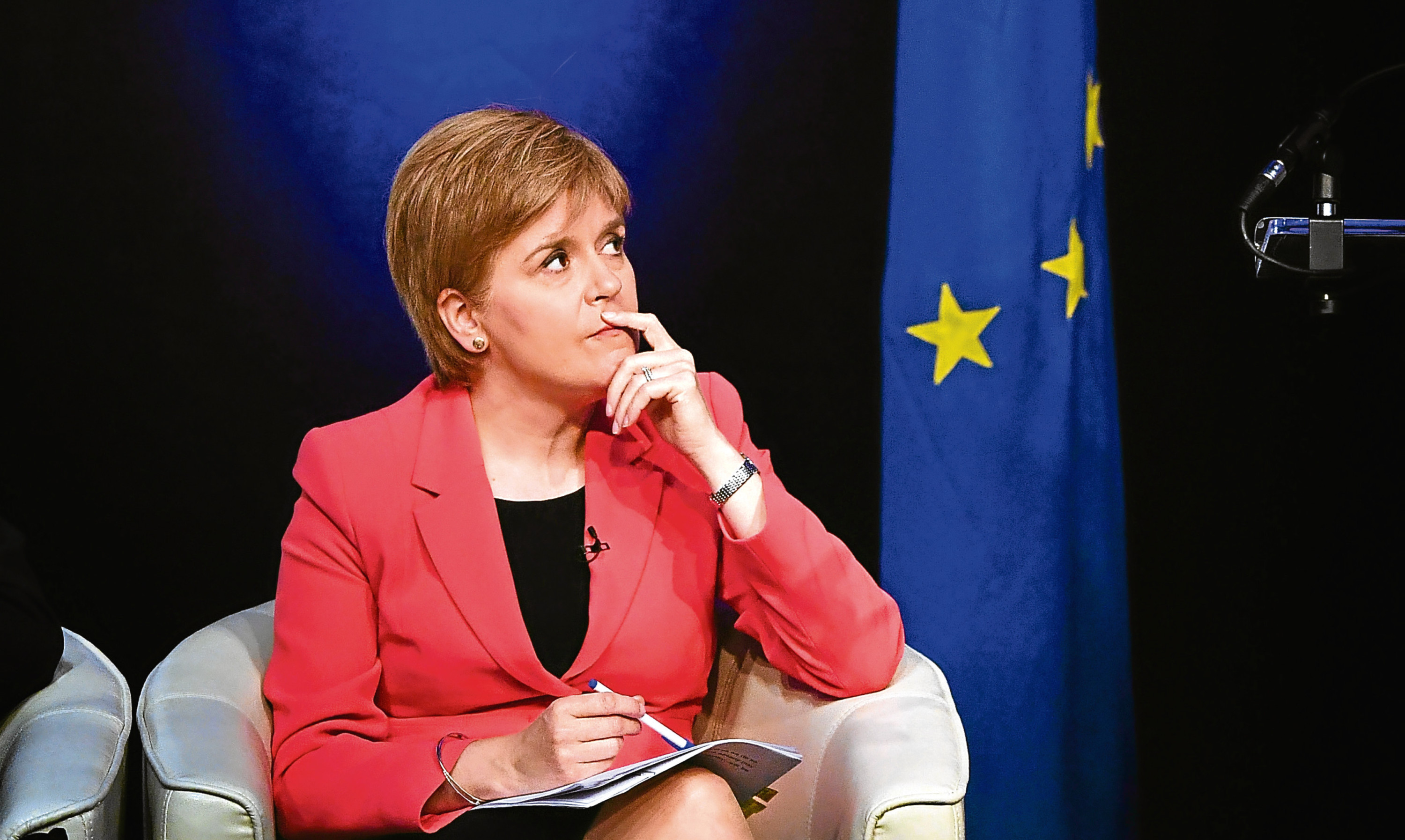There seem to be two parallel universes in Scotland at present – one inhabited by Nicola Sturgeon and her party faithful in the SNP and the other by rational beings.
In camp one, Scotland imagines it can magic money out of thin air while dismissing depressing revenue and spending statistics. The collapse of the oil sector is Westminster spin and Nationalist triumphalism will pay the bills.
In camp two, the state of the country’s finances appears bleak: the Scottish government spent £14.8 billion more in 2015-16 than it raised in taxes and the country’s deficit is more than twice that of the UK.
Greece fares better.
In Sturgeon’s world, the sole purpose of government is to separate Scotland from the rest of the UK. Any obstacles to this target – the SNP’s inability to handle the economy, for instance, or the lack of voter enthusiasm for another independence referendum – are swept aside.
She embarks this week on her new drive to sell the merits of independence to a weary electorate, attempting to “reach out” to people who voted No in September 2014.
The crusade comes on the back of Brexit, which saw 62 % of Scots in favour of remaining within the EU while a UK majority voted to leave.
This alone, the Nationalists argue, is grounds for a referendum rerun but the Government Expenditure and Revenue Scotland (GERS) report last week revealing the £15bn black hole has created a new political reality.
Alarm
And in the real world, there is increasing alarm over the SNP’s single issue obsession and denial of the stark financial truth.
Now, two leading economists have accused Sturgeon of hiding behind Brexit to avoid tackling Scotland’s deficit.
She insists the greatest risk to Scotland’s economy comes from the EU exit.
However, John McLaren, author of the Scottish Trends economic bulletin, said: “There has been next to no real growth in the Scottish economy since the end of 2014 and the threat of the economy slipping into recession this year is becoming real.
“Blaming Brexit, which is not behind the current torpor, does not address the reasons for the decline or what the Scottish government needs to do to address it.”
Meanwhile, Tony Mackay, a former economics professor at Aberdeen University and compiler of the Scottish Economy Monthly Report, said the Nationalist government needed to cut public sector spending to reduce the deficit and grow the economy.
“I fear that the Brexit arguments will allow the Scottish government to continue to avoid taking responsible decisions about revenue and spending,” he said.
Jumping on the Brexit bandwagon was an obvious ploy for the SNP, which has, of course, long shifted culpability for its problems elsewhere. London has been the default cause, in Nationalists’ eyes, for all Scotland’s problems to date.
Most Scots did not fall for that fiction two years ago, choosing to believe instead the Unionists’ claim that Scotland could not afford to be cast adrift from the UK tax base.
Since then, the price of oil has collapsed and that sector is now worth £60 million to Scottish coffers, a drop of 96% in a year. Even Yes voters must have been secretly relieved the vote had gone against them and their livelihoods would continue to be protected by being a part of the United Kingdom.
New myth
But for hardline secessionists, a new myth was needed. The EU referendum on June 23, with a narrow UK majority opting to leave, provided the necessary narrative and now Sturgeon just mentions the “B” word when cornered by bad news.
It seems to have escaped her notice that Scotland’s trade with the EU – which accounts for around 15% of our exports – is dwarfed by the more than 65% that goes to the rest of the UK.
The case for breaking up Britain to stay in Europe, even if that were possible – and that is by no means certain – does not make any financial sense.
To make matters worse, Sturgeon has appointed two economic managers with little grasp of the task ahead of them. Keith Brown is Scotland’s economy minister, while Derek Mackay is finance secretary.
It is difficult to tell which of them is in charge but sorting out the SNP’s economic shambles was beyond the skills of John Swinney and neither of these politicians is of that calibre.
Astonishingly, though, SNP strategists have vowed to put the economy at the heart of their renewed independence initiative, acknowledging that this was one of the weaknesses of their campaign in 2014.
Surely Sturgeon doesn’t think today’s conditions will assuage No voters’ doubts. Either she has lost the plot, or she is warming up for her party conference next month – appeasing Nationalist interests once again being more important to her than defending Scottish interests.
